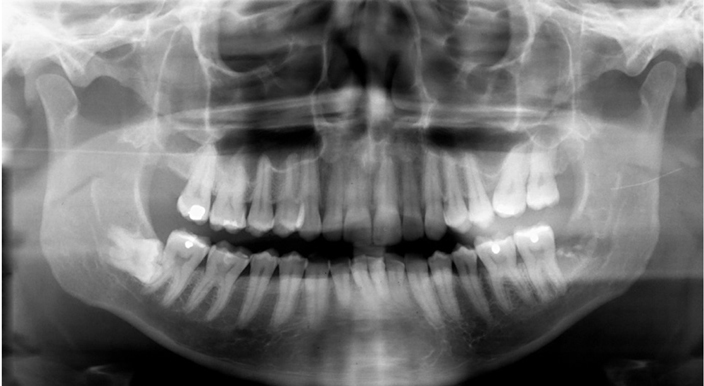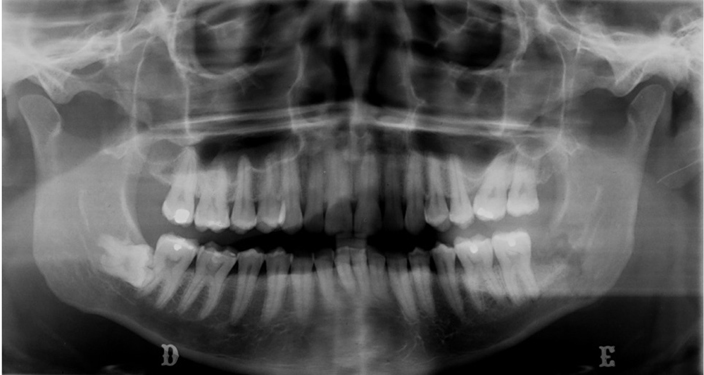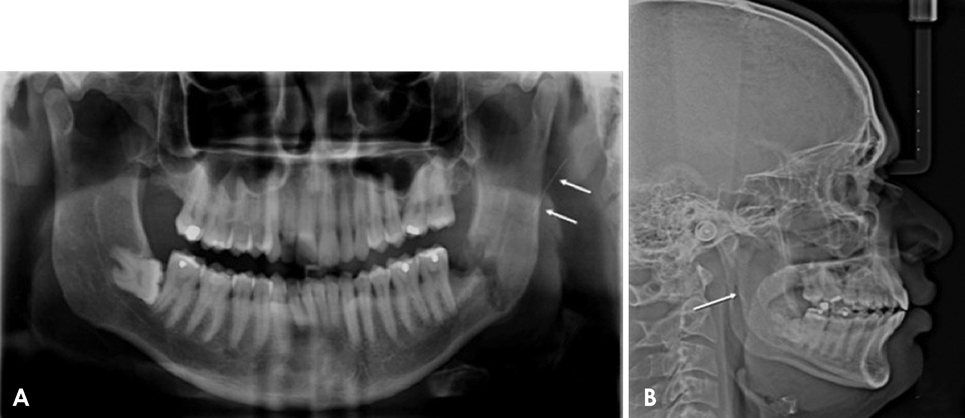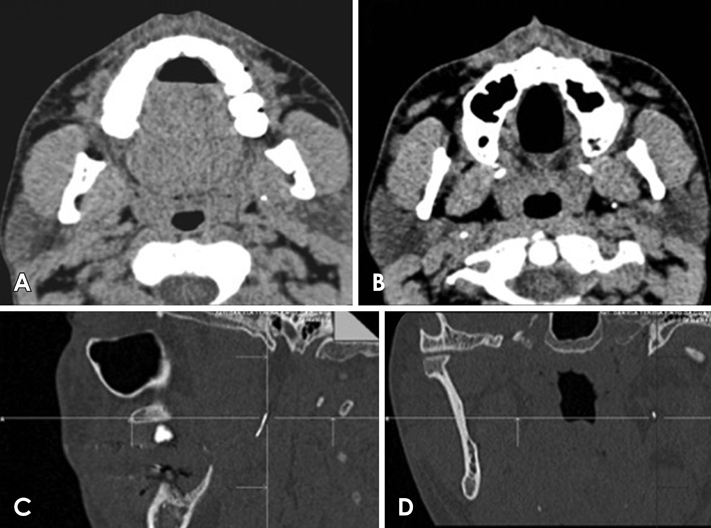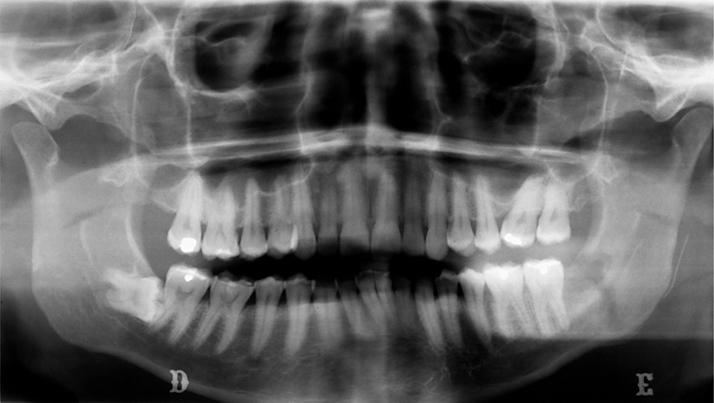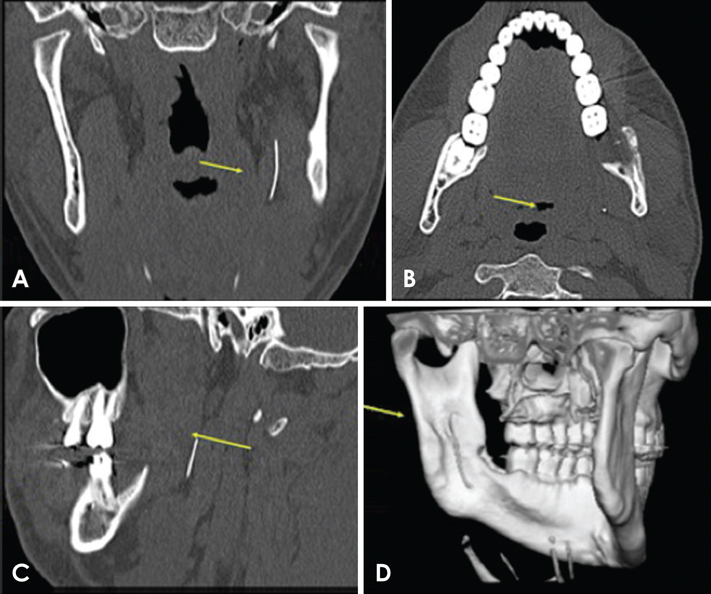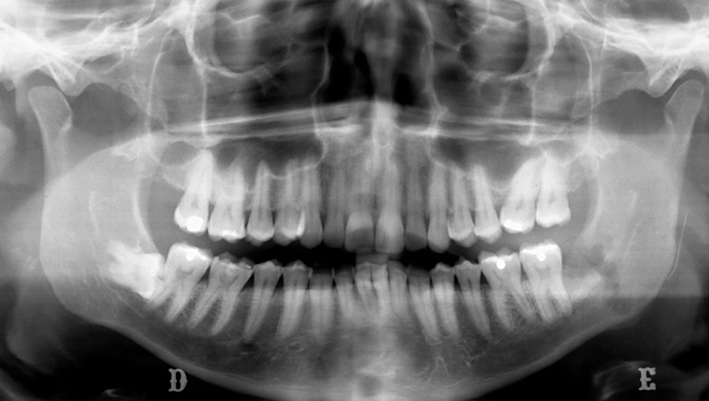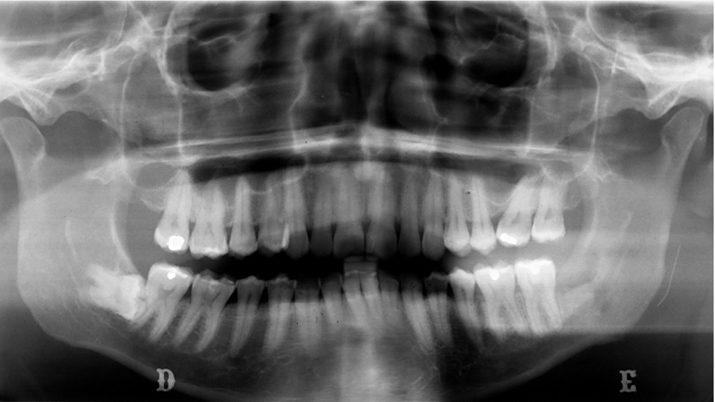Imaging Sci Dent.
2017 Mar;47(1):63-68. 10.5624/isd.2017.47.1.63.
Radiographic and computed tomography monitoring of a fractured needle fragment in the mandibular branch
- Affiliations
-
- 1Department of Dentistry, Pontificial Catholic University of Minas Gerais, Belo Horizonte, Brazil. contato@misabel.com.br
- KMID: 2391409
- DOI: http://doi.org/10.5624/isd.2017.47.1.63
Abstract
- Some complications can arise with the usage of local anesthesia for dental procedures, including the fracture of needles in the patient. This is a rare incident, usually caused by the patient's sudden movements during anesthetic block. Its complications are not common, but can include pain, trismus, inflammation in the region, difficulty in swallowing, and migration of the object, which is the least common but has the ability to cause more serious damage to the patient. This report describes a case in which, after the fracture of the anesthetic needle used during alveolar nerve block for exodontia of the left mandibular third molar, the fragment moved significantly in the first 2 months, before stabilizing after the third month of radiographic monitoring.
Keyword
MeSH Terms
Figure
Reference
-
1. Augello M, von Jackowski J, Grätz KW, Jacobsen C. Needle breakage during local anesthesia in the oral cavity - a retrospective of the last 50 years with guidelines for treatment and prevention. Clin Oral Investig. 2011; 15:3–8.2. Bedrock RD, Skigen A, Dolwick MF. Retrieval of a broken needle in the pterygomandibular space. J Am Dent Assoc. 1999; 130:685–687.
Article3. Chrcanovic BR, Menezes Junior DC, Custodio AL. Complication of local dental anesthesia - a broken needle in the pterygomandibular space. Braz J Oral Sci. 2009; 8:159–162.4. Pogrel MA. Broken local anesthetic needles: a case series of 16 patients, with recommendations. J Am Dent Assoc. 2009; 140:1517–1522.5. Ethunandan M, Tran AL, Anand R, Bowden J, Seal MT, Brennan PA. Needle breakage following inferior alveolar nerve block: implications and management. Br Dent J. 2007; 202:395–397.
Article6. Faura-Solé M, Sánchez-Garcés MA, Berini-Aytes L, Gay-Escoda C. Broken anesthetic injection needles: report of 5 cases. Quintessence Int. 1999; 30:461–465.7. Zeltser R, Cohen C, Casap N. The implications of a broken needle in the pterygomandibular space: clinical guidelines for prevention and retrieval. Pediatr Dent. 2002; 24:153–156.8. Kim JH, Moon SY. Removal of a broken needle using three-dimensional computed tomography: a case report. J Korean Assoc Oral Maxillofac Surg. 2013; 39:251–253.
Article9. Nezafati S, Shahi S. Removal of broken dental needle using mobile digital C-arm. J Oral Sci. 2008; 50:351–353.
Article10. Thompson M, Wright S, Cheng LH, Starr D. Locating broken dental needles. Int J Oral Maxillofac Surg. 2003; 32:642–644.
- Full Text Links
- Actions
-
Cited
- CITED
-
- Close
- Share
- Similar articles
-
- Fractured needle as an unusual complication of the lingual nerve block: a case report
- Reliability of panoramic radiography in predicting proximity of third molars to the mandibular canal: A comparison using cone-beam computed tomography
- Removal of a broken needle using three-dimensional computed tomography: a case report
- Recurrent simple bone cyst of the mandibular condyle: a case report
- Cone beam computed tomography findings of ectopic mandibular third molar in the mandibular condyle: report of a case

